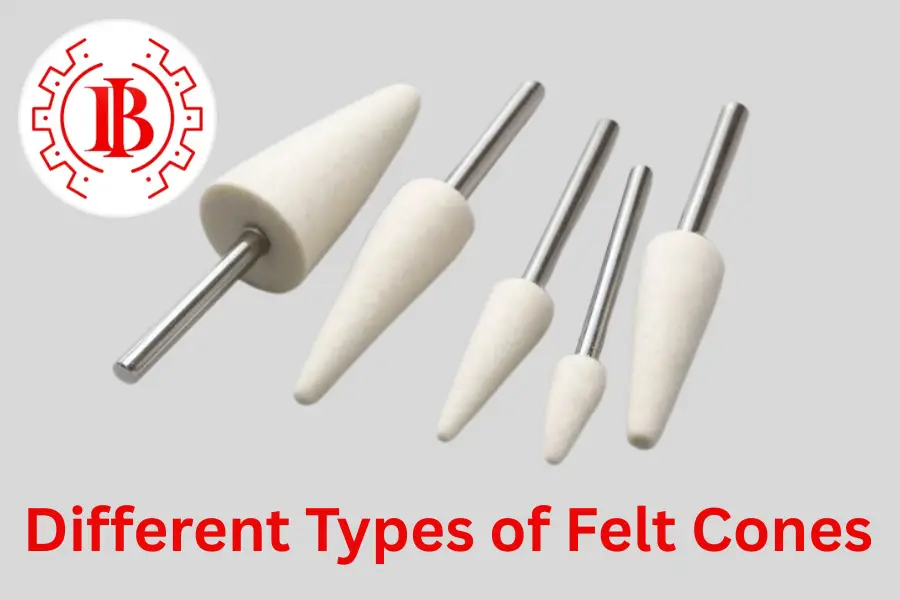Felt bobs are essential tools in the world of polishing and finishing. Whether you’re working with metals, glass, stone, or even delicate surfaces like jewellery and watch components, felt bobs provide the precision and softness needed for a smooth, professional finish. However, like any tool, their performance and lifespan depend greatly on proper maintenance and storage.
Improper use or neglect can cause felt bobs to wear out quickly, lose their shape, or become contaminated resulting in poor finishing quality and higher replacement costs. In this guide, we’ll cover how to maintain and store felt bobs properly to ensure they last longer and deliver consistent performance.
Clean After Every Use
After each polishing session, it’s important to clean your felt bobs to remove built-up polishing compounds, debris, or metal particles that can degrade performance or damage the work surface.
Cleaning Tips:
- Use a brush or compressed air to remove loose debris.
- For deeper cleaning, gently soak the felt bob in warm soapy water, then rinse and air dry.
- Avoid aggressive scrubbing or high heat, which can distort the felt’s shape.
- Cleaning not only extends the tool’s life but also prevents cross-contamination when switching between polishing different materials or compounds.
Rotate Usage to Prevent Uneven Wear
Using the same felt bob continuously can cause uneven wear, which leads to inconsistent finishes and reduces control during polishing. To avoid this:
- Rotate between multiple bobs, especially for long polishing jobs.
- Keep separate bobs for rough polishing, fine polishing, and finishing.
- Label or color-code your bobs to quickly identify them for different stages or materials.
This rotation strategy helps preserve the shape and integrity of each felt bob, ensuring better results and a longer lifespan.
Reshape When Necessary
Over time, felt bobs can become rounded, flattened, or frayed, especially when used on hard surfaces or under high pressure. If a bob loses its shape, you don’t always need to replace it immediately you can reshape it using a sharp blade or file.
Reshaping Steps:
- Trim uneven or worn edges with a razor or utility knife.
- Use a dressing stone or grinding wheel to restore a tapered or pointed shape.
- Always reshape slowly and evenly to avoid ruining the felt density.
Keeping your bobs in shape helps maintain accuracy and finish quality during detailed polishing work.
Avoid Excessive Pressure and Heat
Felt bobs are designed to polish gently. Applying too much pressure or running tools at excessively high RPMs can:
- Flatten or tear the felt
- Overheat the work surface
- Burn or harden the polishing compound
- Reduce the tool’s polishing ability
Best Practice:
- Use moderate pressure let the tool do the work.
- Follow the manufacturer’s recommended speed range (typically under 15,000 RPM).
- Allow the felt to cool between heavy-use sessions.
- By avoiding excessive force and heat, you’ll prolong the life of your felt bobs and ensure a consistent polishing finish.
Use the Right Polishing Compound
Different materials and finishing needs require different polishing compounds. Using the wrong type can clog the felt or reduce its effectiveness.
Tips:
- Match the compound to the material (e.g., green for chrome, red for gold, white for stainless steel).
- Apply compound sparingly to avoid oversaturation.
- Use dedicated felt bobs for each compound to prevent cross-contamination.
- Well-matched compounds enhance the bob’s performance and minimize wear and tear.
- Store Properly to Avoid Contamination and Deformation
- When not in use, felt bobs should be stored correctly to preserve their shape and cleanliness.
Storage Guidelines:
- Keep them in individual containers or compartments to prevent contact with dust, oil, or other tools.
- Avoid stacking or crushing, as it can deform the felt.
- Store in a dry, cool place, away from direct sunlight or moisture.
- Use labelled storage boxes for different grit levels, compounds, or material use.
- If you’re working in a shared workshop, proper storage also protects your tools from misuse by others.
- Inspect Regularly for Damage or Wear
- Before starting any polishing task, inspect your felt bobs for:
- Tears, cuts, or burns
- Hardened or glazed areas
- Irregular shapes or contamination
- Discoloration or embedded particles
- Replace felt bobs that show significant signs of damage or wear to avoid poor-quality finishes or potential damage to the work surface.
Keep a Usage Log for Industrial Applications
- For industrial users or workshops managing multiple stations, it’s helpful to track the usage of each felt bob batch.
- Note usage time, materials polished, and compounds used.
- Rotate tools systematically to ensure even usage across the inventory.
- Plan reordering based on wear trends and project demands.
- This systematic approach enhances efficiency, tool life, and quality control.
- Felt bobs are small but powerful tools that contribute significantly to precision polishing and fine surface finishing. By following proper maintenance and storage practices, you can extend the life of your felt bobs, reduce replacement costs, and consistently achieve professional results.
- Whether you’re a jeweller, machinist, dental technician, or industrial manufacturer, taking care of your felt bobs is an investment in both tool longevity and finish quality.



